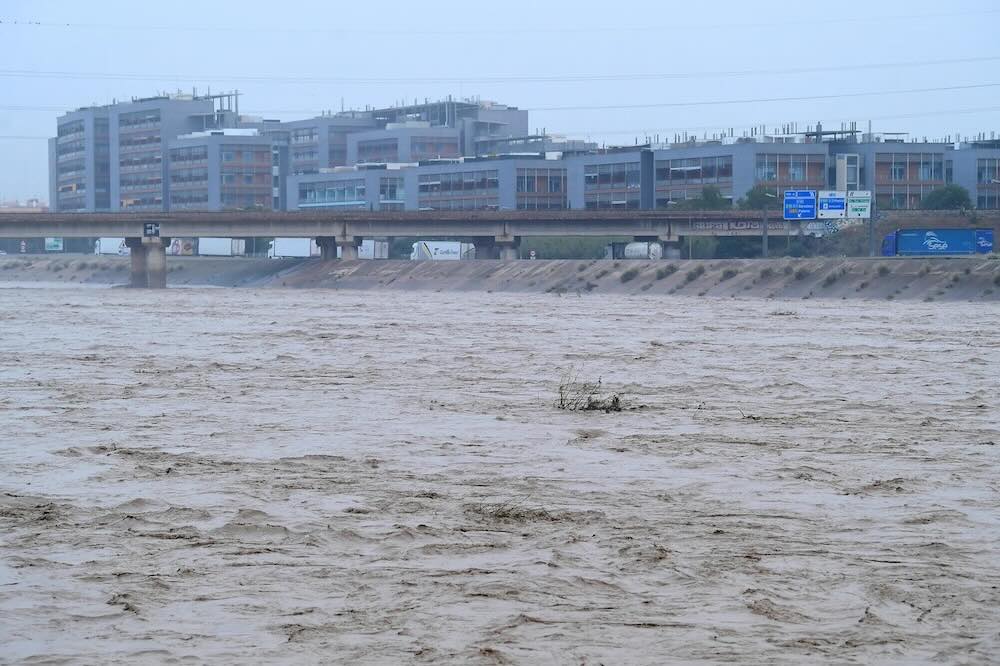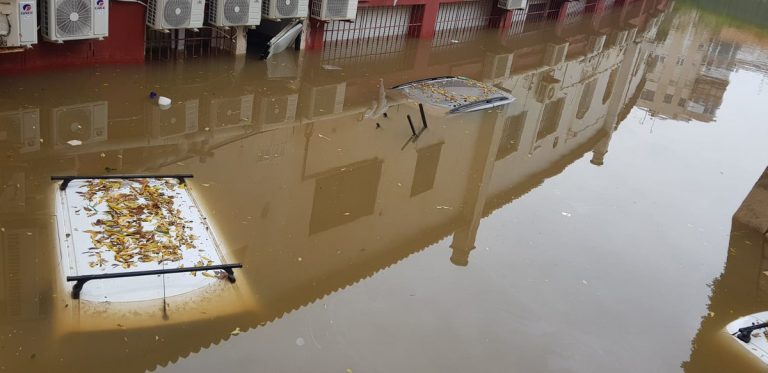In October 2024, Valencia, Spain, experienced one of its most severe and deadly storms in recent years. As of November 2024, the storm led to torrential rain, devastating floods, road closures, significant property damage, and over 200 deadly victims. Some of the news websites call this phenomenon “Cyclone Dana”, but this name is actually an acronym.
A meteorological phenomenon called DANA, which stands for Depresión Aislada en Niveles Altos, or Isolated Depression at High Altitudes, caused flooding in Spain. But what exactly is DANA, and how did it create such chaos on Spain’s east coast? Let’s break down this weather pattern, how it forms, and its role in Valencia’s latest storm.
What Is the DANA Weather Phenomenon?
DANA is a high-altitude atmospheric phenomenon that commonly occurs in Mediterranean regions. It is characterized by a cold air mass becoming detached from the main polar jet stream. This isolated cold mass settles over warmer, moist air near the surface, creating an environment ripe for severe thunderstorms, intense rain, and even hailstorms. Here’s a simplified look at how DANA functions:
- High-altitude isolation. A cold air mass detaches from the primary jet stream, drifting southward.
- Temperature clash. This cold air meets the warmer, moist air over the Mediterranean Sea, intensifying instability.
- Rapid storm formation. The clash of temperatures causes a rapid uplift of warm air, leading to condensation and storm formation.
The unique nature of DANA means that its presence can bring about highly unpredictable and intense weather events, especially along coastal areas like Valencia.
Flooding in Spain: The Impact of DANA on Valencia
 Source: Jose Jordan, Getty Images
Source: Jose Jordan, Getty Images
When DANA swept over Valencia, it quickly overwhelmed the city’s infrastructure and led to severe flooding, hampering the rescue efforts. Here are some of the immediate and long-term impacts:
- Flooding of streets and buildings. Major roads and neighborhoods were submerged, with water levels reaching over a meter in some places. Chiva, a town near Valencia, experienced an entire year’s worth of rainfall in just eight hours, as reported by the national weather agency Aemet.
- Traffic disruptions. Train services were suspended, and several highways were closed due to debris and water accumulation. Some witnesses reported that the huge waves swiping away the cars reminded them of a tsunami.
- Evacuations and rescues. Spain sent over 1,000 troops to assist with rescue operations. However, many teams became isolated from towns due to flooded roads and disrupted communication and power lines.
Why DANA is Especially Impactful in the Mediterranean Region
DANA events are not unique to Spain, but they are especially intense in the Mediterranean due to the region’s unique climate characteristics. The Mediterranean is a semi-enclosed sea, which often retains heat late into the year, causing higher sea temperatures. When cold air interacts with this warm, humid environment, it leads to severe weather conditions.
Some reasons the Mediterranean is particularly vulnerable to DANA events include:
- High sea surface temperatures. The sea’s retained warmth amplifies atmospheric instability when cold air moves in.
- Coastal geography. Mountain ranges along the coast intensify rainfall as moist air is lifted and cooled rapidly.
- Urban infrastructure. The infrastructure of Mediterranean cities, like Valencia, is often poorly suited for sudden, torrential downpours, which can lead to flash floods and disruptions.
 Source: World Events on X
Source: World Events on X
A Look at Recent DANA Events in Spain
Spain has faced multiple DANA-related events over the past decade, with varying levels of impact. Here’s a summary of recent significant DANA episodes:
| Year | Region | Impact |
|---|---|---|
| 2019 | Eastern Spain | Major flooding in Alicante and Murcia; widespread evacuations and property damage |
| 2021 | Mediterranean Coast | Severe flooding in Catalonia; road and rail disruptions, especially around Barcelona |
| 2024 | Valencia | Significant flooding; road closures, disrupted train services, and heavy economic losses |
 Source: GVA 112, Floodlist.com
Source: GVA 112, Floodlist.com
Why DANA Is Here to Stay
As climate change raises sea temperatures, Mediterranean DANA events will likely increase in intensity and frequency. While the phenomenon itself is natural, climate-related changes can worsen its impact. Warmer seas, higher humidity levels, and urban development along coastlines contribute to heightened risk during a DANA event.
Preparing for Future DANA Events
Spain and other Mediterranean countries are actively working to improve infrastructure and early warning systems to mitigate DANA’s impact. Measures being taken include:
- Enhanced weather monitoring. Meteorological agencies are improving satellite and weather radar systems to better predict DANA formation.
- Flood management infrastructure. Cities invest in flood barriers, updated drainage systems, and emergency response training.
- Public awareness campaigns. Educating the public on evacuation procedures and emergency preparedness can reduce casualties and property loss.






